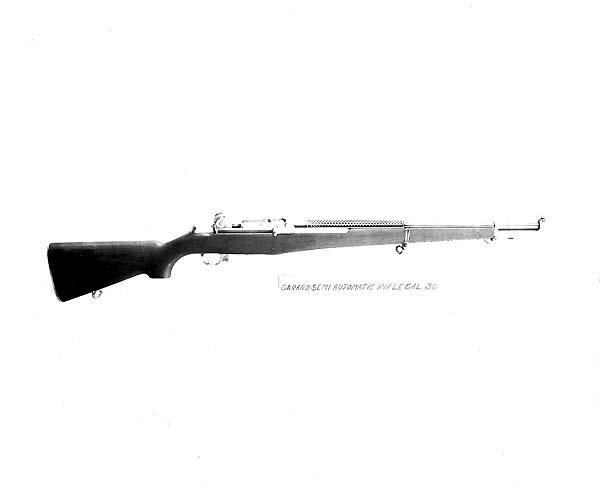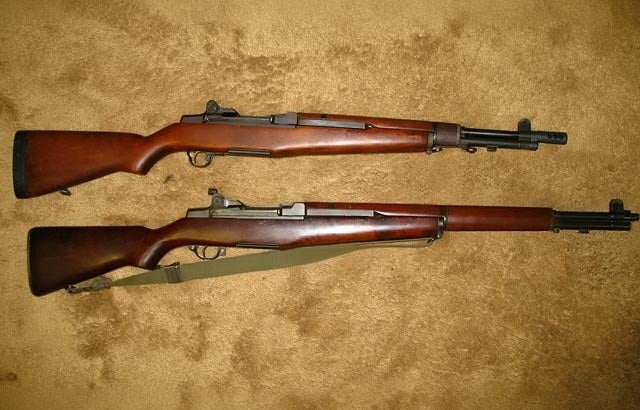

So, a couple of years ago, Forgotten Weapons made a video on this M1 Garand prototype rifle with a 1x Magnification scope on it. However, there was no available information on the gun. Well, since I live in Springfield, MA, I’d thought I go to the Springfield armory museum and ask them about it. I’d thought while the M1 in question was a post-WWII rifle, maybe they were experimenting with this kind of optic during the war, as it is similar to the German ZF41. Surprisingly, they did not know anything about it, even though the weapon does have Springfield Armory markings.
So, they told me to email the curator and this was his response:
Sure is an interesting sight. I certainly think you’re on to something - the Armory was definitely experimenting with Collimator sights in 1944, when they played with the T131 reflex sight around the time they were working on the M1C/D sniper configurations. That was in September of 1944 or so. But, we really don’t have any archives about it. All our current understanding of this project comes from other works by outside authors who have gone through the records in the National Archives (which is where you’d find most surviving records). I’d recommend starting with books by Bruce Canfield - particularly his most recent book on the M1 Rifle - it ain’t cheap, but it’s thorough.
For another example, here’s a snippet from Paul Davies’ book on WWII Guns: “At the request of Headquarters, Army Ground Forces, as a result of the Infantry Board test of an exploratory model of a Collimator Sight T53 with Instrument Light T12, a project was initiated in September 1944 This sight, designated as Sight, Reflex-Collimator, T110E is currently in process of completion. This sight embodies the following features and characteristics: a. Attachable to the M1C and M1D Sniper’s Rifles by the same type of mounts. b. Suitable for either day or night use because of a self-contained electrical system employing two dry-cells (T110 Sight employed one dry cell), electric bulb and a switch rheostat. c. Contains a light beam reticule, dot and circle type. d. Contains a view plate, on which the light beam reticule is reflected and transparent so that the eye which sees the reticule also sees the target and permits a field of view of 6 degrees plus. e. Contains elevation and windage adjustment with micrometer click graduations in yards for elevation and minutes of angle for windage. Realizing the deterioration of batteries in storage and frequent replacement of batteries are objectionable features, a development is under way to attempt to overcome the necessity for use of batteries. Recent developments in materials and technique of application indicate the possibility of illuminating reflex-collimator sights by natural light in daylight hours, and by radium activated phosphorescent materials during periods when insufficient natural light is available. This development to effect illumination of sights of the T110 type is being carried under the designation of Sight, Reflex-Collimator, T140. Further investigation of collimator type sights for replacement of iron sights for daytime use is being carried on in the Sight, Reflex, T131. This item embodies a concave transparent lens of small diameter and a reticule fixed in proper relationship to the curvature, both mounted on a base plate. This item will be readily adaptable to any small arms weapon by means of mounts appropriate to the type weapon with elevation and windage adjustments as required.”
The rifle that Ian featured clearly isn’t an M1C or D, so it looks like it might be closer to the idea of the T131 mentioned in the last sentence, but that may be something else. If you’re local to us, you can certainly look in our library for secondary sources, which might give you some clues as to where the original documents are hiding.
There’s a photo of the T110 Collimator in Canfield’s latest book (p.430), and this one isn’t it. Apparently, the Marines were also playing with the idea as well. The above quote from Davies actually comes from the Aberdeen Proving Grounds archives, which are down in Washington.
Definitely let us know if you find anything more!
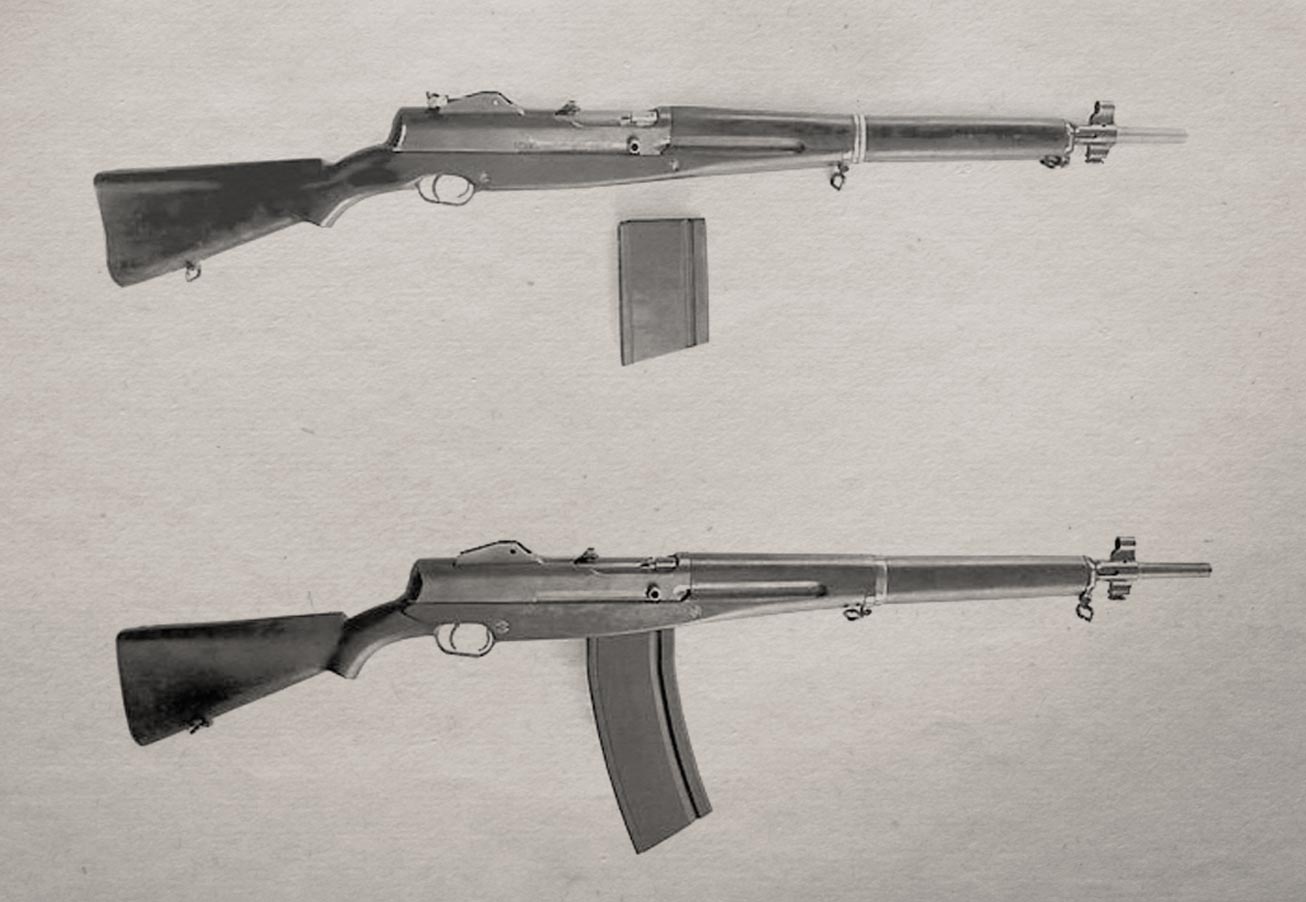
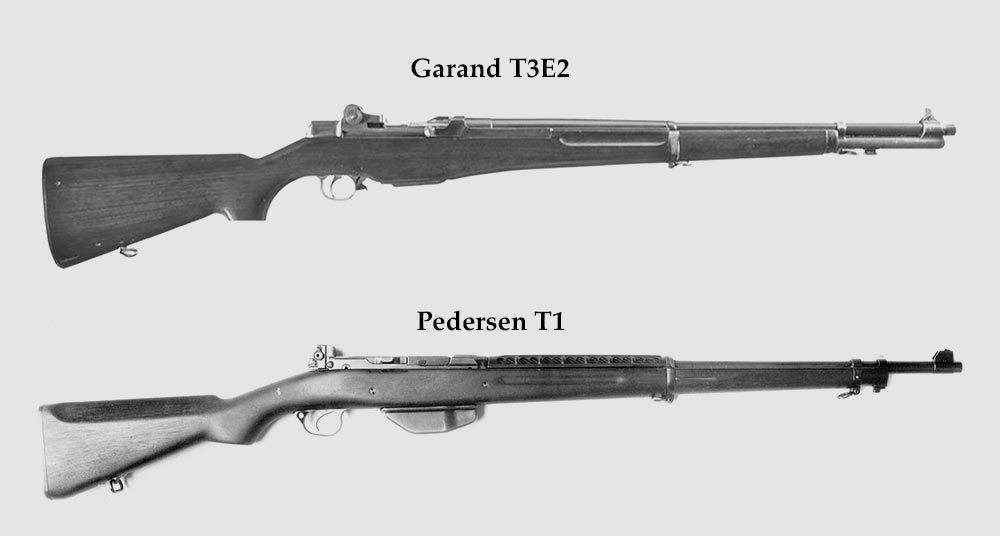

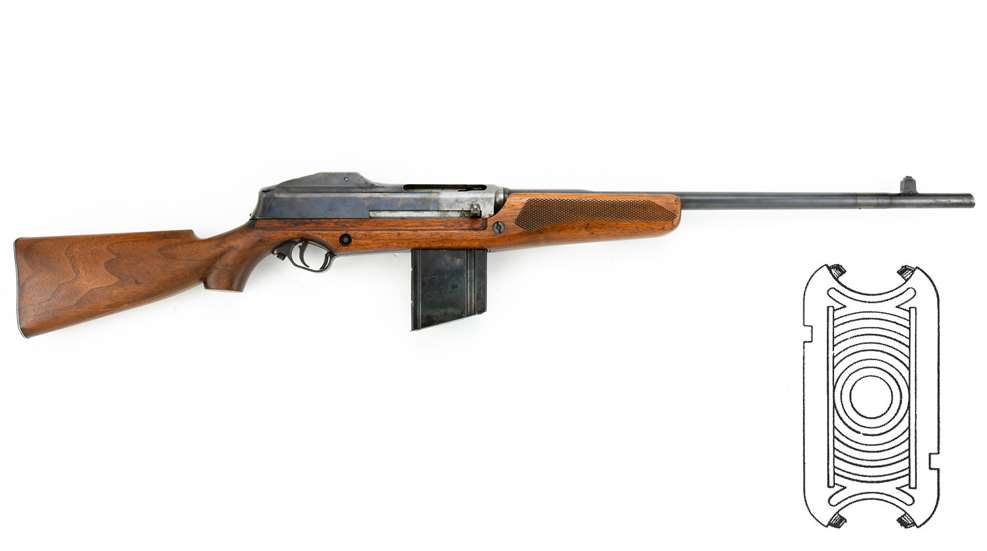

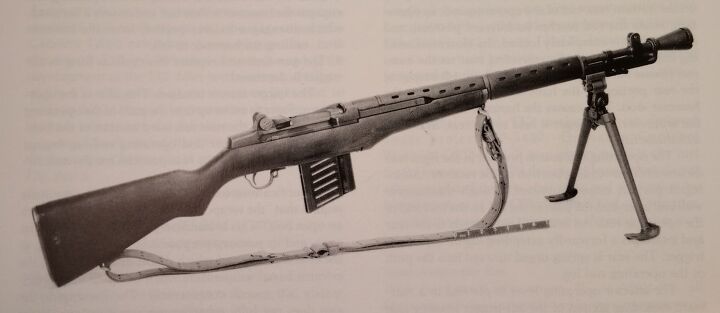


Early Garand Rifles
Model 1919 Patent Model SPAR915
John Garand’s patent, dated September 5, 1919, is clearly reflected in his first experimental weapon. In the early pieces, Garand used a primer actuated system which used the set back power of the cartridge primer to operate the action.The M1919 patent model fully-automatic machine gun (not semi-automatic as his later weapons were) was submitted by John Garand while he was working as a master gauge and gun experimenter at the U.S. Bureau of Standards. This weapon may be viewed in the Museum exhibit case 35
Springfield Armory NHS, US NPS
The M1920 model number 2 submitted by John Garand for the 1920 comparative tests at Springfield Armory. This weapon may be viewed in the Museum exhibit case 35.
Garand’s Model 1921 SPAR7013 in .30" caliber, was the third rifle he created and was similarly primer-actuated. Unlike the Model 1920, however, which operated with a rotating bolt with front locking lugs, the Model 1921 bolt didn’t rotate but locked in place at its rear which pivoted and rested before a locking shoulder in the frame. Also unlike the two earlier models (the 1919 Patent Model and the Model 1920), the Model 1921 did not use a 20 or 30 round detachable magazine. Instead, it was fitted with a fixed 5 round magazine in the receiver. The receiver for this rifle may be viewed in the Museum in case 57.
The M1923. It was reviewed by the Infantry & Cavalry Boards in tests completed Feb. 1924. This weapon may be viewed in the Museum exhibit case 35.
The Garand T1 rifle, in .30" caliber, was made and tested at Springfield Armory in 1930. The T1 rifle barreled action may be viewed in the Museum exhibit case 57. The T1E1 rifle may be viewed in the Museum exhibit near case 35.
U.S. RIFLE T3 GARAND .276 SPAR6418
The first Garand Springfield Armory rifle of Cal…276; completed June 1929; operated by gas-piston with port between barrel and muzzle piece; marked ‘U.S. Semi-Auto. Rifle T3 Cal…276 Garand Patents.’ (Tested by Board 1929)." - Letter to Chief of Ordnance, 11/12/1929. Only one made. Weapon tested 7/1/29 - 10/24/29.
The “Model Shop” M1
rifle seen here in a 1935 photograph displays the features of these early weapons, i.e., single-blade front sight and trigger guard without lanyard loop. Note the long US M1905 bayonet with its 16" blade. Early Garand Rifles
Model 1919 Patent Model SPAR915
John Garand’s patent, dated September 5, 1919, is clearly reflected in his first experimental weapon. In the early pieces, Garand used a primer actuated system which used the set back power of the cartridge primer to operate the action.The M1919 patent model fully-automatic machine gun (not semi-automatic as his later weapons were) was submitted by John Garand while he was working as a master gauge and gun experimenter at the U.S. Bureau of Standards. This weapon may be viewed in the Museum exhibit case 35
Springfield Armory NHS, US NPS
The M1920 model number 2 submitted by John Garand for the 1920 comparative tests at Springfield Armory. This weapon may be viewed in the Museum exhibit case 35.
Garand’s Model 1921 SPAR7013 in .30" caliber, was the third rifle he created and was similarly primer-actuated. Unlike the Model 1920, however, which operated with a rotating bolt with front locking lugs, the Model 1921 bolt didn’t rotate but locked in place at its rear which pivoted and rested before a locking shoulder in the frame. Also unlike the two earlier models (the 1919 Patent Model and the Model 1920), the Model 1921 did not use a 20 or 30 round detachable magazine. Instead, it was fitted with a fixed 5 round magazine in the receiver. The receiver for this rifle may be viewed in the Museum in case 57.
The M1923. It was reviewed by the Infantry & Cavalry Boards in tests completed Feb. 1924. This weapon may be viewed in the Museum exhibit case 35.
The Garand T1 rifle, in .30" caliber, was made and tested at Springfield Armory in 1930. The T1 rifle barreled action may be viewed in the Museum exhibit case 57. The T1E1 rifle may be viewed in the Museum exhibit near case 35.
U.S. RIFLE T3 GARAND .276 SPAR6418
The first Garand Springfield Armory rifle of Cal…276; completed June 1929; operated by gas-piston with port between barrel and muzzle piece; marked ‘U.S. Semi-Auto. Rifle T3 Cal…276 Garand Patents.’ (Tested by Board 1929)." - Letter to Chief of Ordnance, 11/12/1929. Only one made. Weapon tested 7/1/29 - 10/24/29.
The “Model Shop” M1
rifle seen here in a 1935 photograph displays the features of these early weapons, i.e., single-blade front sight and trigger guard without lanyard loop. Note the long US M1905 bayonet with its 16" blade. Early Garand Rifles
Model 1919 Patent Model SPAR915
John Garand’s patent, dated September 5, 1919, is clearly reflected in his first experimental weapon. In the early pieces, Garand used a primer actuated system which used the set back power of the cartridge primer to operate the action.The M1919 patent model fully-automatic machine gun (not semi-automatic as his later weapons were) was submitted by John Garand while he was working as a master gauge and gun experimenter at the U.S. Bureau of Standards. This weapon may be viewed in the Museum exhibit case 35
Springfield Armory NHS, US NPS
The M1920 model number 2 submitted by John Garand for the 1920 comparative tests at Springfield Armory. This weapon may be viewed in the Museum exhibit case 35.
Garand’s Model 1921 SPAR7013 in .30" caliber, was the third rifle he created and was similarly primer-actuated. Unlike the Model 1920, however, which operated with a rotating bolt with front locking lugs, the Model 1921 bolt didn’t rotate but locked in place at its rear which pivoted and rested before a locking shoulder in the frame. Also unlike the two earlier models (the 1919 Patent Model and the Model 1920), the Model 1921 did not use a 20 or 30 round detachable magazine. Instead, it was fitted with a fixed 5 round magazine in the receiver. The receiver for this rifle may be viewed in the Museum in case 57.
The M1923. It was reviewed by the Infantry & Cavalry Boards in tests completed Feb. 1924. This weapon may be viewed in the Museum exhibit case 35.
The Garand T1 rifle, in .30" caliber, was made and tested at Springfield Armory in 1930. The T1 rifle barreled action may be viewed in the Museum exhibit case 57. The T1E1 rifle may be viewed in the Museum exhibit near case 35.
U.S. RIFLE T3 GARAND .276 SPAR6418
The first Garand Springfield Armory rifle of Cal…276; completed June 1929; operated by gas-piston with port between barrel and muzzle piece; marked ‘U.S. Semi-Auto. Rifle T3 Cal…276 Garand Patents.’ (Tested by Board 1929)." - Letter to Chief of Ordnance, 11/12/1929. Only one made. Weapon tested 7/1/29 - 10/24/29.
The “Model Shop” M1
rifle seen here in a 1935 photograph displays the features of these early weapons, i.e., single-blade front sight and trigger guard without lanyard loop. Note the long US M1905 bayonet with its 16" blade. ![Experimental semi-automatic rifles by John Garand, 1919-1936 …]





